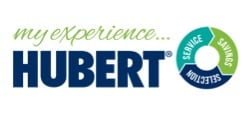ATS Communication
How does an ATS improve communication with job applicants?
Applicant tracking systems streamline communication with job candidates.
But it’s how you use these tools that will determine your hiring success.
How does an ATS improve communication with job applicants?
Applicant tracking systems streamline communication with job candidates.
But it’s how you use these tools that will determine your hiring success.
We help small businesses (and large ones too) engage with job applicants and hire the best.




Excellent Integration and Investment
“ExactHire has proven to be a valuable resource that has streamlined our candidate and onboarding process. This is very important because our organization is process driven. This means that we align our processes to reduce touch labor, which results in more Return on Investment (ROI).
We have tried previous HR solutions in the past but none has produced the results obtained from using ExactHire. The service provided to us was top notch. I highly recommend this product to companies who want to align their business processes with a time-efficient tool.”

“It’s easy to use, the support staff is very helpful, set up and implementation is very easy, easy to add sources for recruiting.”

Great bang for your buck!
“As a company that has over 50 retail locations, ExactHire offers us the ease of multiple manager accounts to track applications. Visually, the site is very user-friendly and does not complicate the process. Mass emails, unlimited postings, and unlimited user accounts are my favorite features. Also, the 1-on-1 customer support we receive is timely and tailored exactly to our needs–we talk to the same rep. every time!”

OnboardCentric has been fantastic for our company in getting our talent onboarded and ready to go!
“It’s super easy to use! We can go in there and quickly get started on our employees’ onboarding paperwork. It certainly helps us streamline our onboarding process.”

Easy to use and get great candidates
“Really easy software to use and great for job postings. You can set up new ones or copy old ones to use over again with minimal changes.”

Our applicant review process improved ten-fold
“I love how easy it is to post new jobs and review applicants. We have been able to streamline the process so applications go straight to the hiring manager. This cut down work time in HR by eliminating the need to print and send applications via inter office mail to the managers for review.”

Amazing customer service and easy implementation process
“Pros: The cost, the customer service we receive, and the ease of use of the system for admins and managers.”

This has made our application process and Affirmative Action Tracking so much easier!
“Before, we had tons of paper files and long grueling spreadsheets to maintain. Now, I just direct all of our applicants to one website, and boom, all the information needed for tracking is at your fingertips.”


What you need to know before choosing to buy.
Here’s all you need to know about ATS communication tools. Whether you choose ExactHire or another ATS provider, we hope you find this information helpful in making an informed purchase decision.
Since the advent of online job boards, employers have dramatically increased their ability to reach more job seekers. Companies that began using job sites in the early days enjoyed a huge advantage over their competition that still relied on newspaper classifieds, word-of-mouth, and other more traditional job advertisements. This advantage was short-lived, however. The wild success of job boards and the subsequent evolution of job site aggregators soon grabbed the attention of every hiring company.
Leaps in technology often bring great advantages to the early adopters, but once that technology becomes ubiquitous, the playing field is leveled and competitive advantages are gained through masterful execution of the fundamentals. Take the communication tools of an applicant tracking system for example.
The fact that employers can communicate with an ATS is not the advantage, the advantage lies in how the hiring team communicates using an ATS.
There are hundreds of ATS vendors for employers to choose from, and nearly all of them offer similar functionality that supports communication with job applicants and collaboration among the hiring team. A competitive advantage is not gained by simply having an ATS with integrated email, text messaging, and calendaring when every other employer has those tools too. The true advantage is realized in how an employer uses those tools. In other words, the fact that employers can communicate with an ATS is not the advantage, the advantage lies in how the hiring team communicates using an ATS.
When considering how an organization uses an ATS to communicate, it’s helpful to break down the topic into three groups of functionality:
These groups represent the audience, or who will be receiving the communication from the ATS. Each audience represents a different aspect of the hiring process and possesses different needs and perspectives. This is why it’s so important to not only consider the communication tools that an ATS offers, but how those tools can be deployed to meet the needs of all stakeholders in the hiring process.
Hopefully, it’s clear how important communication is in the hiring process. Not every message will be crucial to hiring outcomes. However, there are critical points where a well composed, timely message can mean the difference between great talent leaving the hiring process or continuing on with excitement. Job applicant communication begins with the initial job posting, continues on though the career site, and then focuses on engaging top job candidates.
A creative job posting is of little value if the applicant communication that follows is generic and impersonal.
There is much written about how important it is to craft a compelling job advertisement. Especially in a tight job market, companies must get creative in attracting the attention of job seekers, who may be looking at hundreds of other job listings. This puts a lot of pressure on employers when crafting the job description. A plain, boring job post will not likely encourage a job seeker to click “apply”. However, it is also important that the job posting complements the employer brand and job applicant messaging that will follow. In other words, a creative job posting is of little value if the applicant communication that follows is generic and impersonal.
Creating personalized job applicant messaging is supported from within an applicant tracking system. While it’s perfectly fine to manually type out personal replies to applicants, this can quickly become very time consuming. This is where ATS applicant data and an integrated message editor can bring efficiency and personalization. By using existing data submitted by the applicant, ATS users can create messages with variable content that changes based upon the applicant who is receiving the message. When this capability is paired with message templates, both personalization and brand consistency can be achieved.
Job applicant communication is designed to get the attention of job-seekers and gain their interest. Job candidate communication is designed to get the serious consideration of the job candidate and gain their participation in the interview stage of the hiring process. Additionally, communication at this stage provides the candidate with an opportunity to see how an organization runs.
Be consistent in messaging and provide timely communications based on a job candidate’s status.
A poorly communicated hiring process could create the impression that the employer is unorganized or uncaring, and result in candidates dropping out of the hiring process. On the other hand, a well communicated process that complements previous messaging and continues to generate excitement in job candidates will succeed in producing exceptional final job candidates. Crucial in achieving the latter is to be consistent in messaging and provide timely communications based on a job candidate’s status in the hiring process.
A key point in the hiring process occurs after job applicants are initially screened and the hiring manager identifies the first round of candidates for the position. At this point, a candidate interview is typically scheduled. Scheduling any event, in any context, can be challenging. It is especially difficult to schedule job interviews when availability, conflicts, and requirements can change so quickly.
An often overlooked part of ATS communication is how it impacts collaboration among the hiring team. With so much competition for talent, it’s no surprise that most employers and HR professionals focus their efforts and attention on communicating with applicants and candidates. However, when a hiring team fails to communicate internally, chances increase that a great candidate will slip through the cracks.
When a hiring team fails to communicate internally, chances increase that a great candidate will slip through the cracks.
Critical to ensuring hiring team collaboration is the ability for ATS administrators to create specific roles for the hiring team that are driven by view/edit permissions. These permissions ensure that members of the hiring team can only view and edit what is required for their role, keeping everyone on the same page and in their own lane. With ATS roles and permissions in place, the next important feature for hiring team collaboration involves providing feedback and notes.
Ideally candidate feedback and notes should be provided in at least two critical areas–in the applicant record and within the candidate interview summary. Especially for larger hiring teams, sharing notes on job candidates can be a huge timesaver that eliminates the need for extra meetings and ensures that relevant information is always available. Notes on the job applicant record could take the form of sharing background information not requested via an online job application, or noting a connection with an existing employee. And when an ATS includes interview guides, the interviewing team can add notes or feedback under relevant questions from the interview. This helps provide context for feedback and invites the perspectives and impressions of all interview participants on a question-by-question basis.
Communication is an extremely important part of the hiring process. For small companies, they need to stand out and differentiate themselves in their communication to compete with larger companies. Whereas large companies deal with so many applicants that their pressing need is for quick and efficient communication. An ATS can solve both of these issues with text recruiting, message templates, email attachments, and interview scheduling. All of these features make the communication aspect of hiring much easier.
There are four main ways that an ATS allows for easier communication, let’s take a look at those four and explain how they work.
Before considering the different ways in which an employer can communicate with a job candidate, it is best to first determine what needs to be communicated. Common purpose for candidate messages may include:
Of course there are many other types of job candidate messages too. The above is a rough framework for what an organization might consider before designing a message template for use with an ATS. Once the “what” is determined, hiring managers must then consider how the message will be communicated. This includes the style or wording of the message as well as the channel through which it will be communicated.
The ability to personalize messages to candidates is extremely important. It shows the applicant that they’re not just another candidate, but someone who the company actually cares about and is interested in. You can achieve this personalization through message templates utilizing your ATS. You can craft messages to include candidate names, locations, and other variable content to allow for quick personalized messages to be sent out to different candidates.
Once created, ATS message templates can be used across both email and text messaging channels. However, it may make sense to customize templates for use with each channel. This helps hiring managers avoid text messages that are overly long, or email messages that come across as too informal. In any case, having candidate message templates in place will make subsequent candidate communication much easier and consistent.
Despite the rise in popularity of text messaging, email is still king when it comes to business communication. Many organizations use a dedicated email for hiring questions, application submissions, and other employment related topics. Often this is a separate inbox (hiring@acme.com) that is managed by an office assistant or a member of the HR staff. And while this setup can work, it is certainly not the ideal method for communicating with job applicants.
A slightly better approach is to eliminate the need to access a different email account for hiring. This means that hiring inquiries would go to the hiring manager’s company email (rjon@ronjons.com). However, the problem there is that the hiring manager may lose track of important candidate information as it mixes with other marketing and operational emails.
The ideal approach to candidate email is to integrate it with an ATS. This ensures that all applicant communications are associated with the relevant applicant record in the ATS. When included in an applicant communication feed, the hiring manager and other members of the hiring team can view a chronological history of applicant communications. In this way, ATS users can quickly understand the context around an applicant as it relates to their status.
In addition to managing email communications from the applicant record, an ATS should allow for candidate email templates, variable content, and email attachments in order to eliminate instances of emailing outside the applicant tracking system.
While email can strike the perfect balance of formality, convenience, and speed. Nothing beats text messaging when it comes to getting a job candidate’s attention. On average, mobile phone users respond to text messages within 90 seconds–compared to email at 90 minutes. For this reason, 40% of companies increased their use of text recruiting in 2022 and more than half have introduced text messaging as part of their hiring process–according to a study by Emissary.
An ATS with integrated text messaging enables employers to launch a text recruiting strategy at scale.
A quick way to implement a text recruiting strategy is to simply ask hiring managers to use a company phone to communicate directly with candidates. However, this approach fails in a few ways. First, it requires hiring managers to split their attention from their work device to communicate with a job candidate. Second, the text message history will reside in the company phone, where it is hard to access when trying to quickly review a candidate. And third, hiring managers are forced to create (or paste and edit) a new text message each time.
An ATS with integrated text messaging enables employers to launch a text recruiting strategy at scale. It allows ATS users to access a text message editor from within the applicant tracking system, keeping their work in one software platform, and on one device. And it will ensure that all text message history is stored on the applicant record for easy review.
Look for an ATS that makes it easy to personalize candidate text messages without going back into an applicant’s file to search for information. Through the use of personalization tags or variable content, hiring managers can easily insert candidate-specific data into text messages. Going one step further, an ATS that supports message templates provides ATS users with the ability to not only personalize communications, but standardize messaging across an applicant pool.
Text messaging is a vital recruiting channel in a competitive job market. Some employers are even discovering that text recruiting is the best channel regardless of market conditions. And though the extent to which texting is used in the hiring process will vary by organization, employers that fail to develop a strategy for text recruiting may miss out on opportunities to better engage and hire top talent.
Applicant communication in the early stages of the hiring process is typically straight forward and procedural. It involves confirmations, thank you notes, status updates, and expectation setting. But as a job applicant advances through the process, communication becomes more transactional, requiring a job candidate to supply additional information, complete assessments, or schedule events.
At this point in the hiring process, many employers may be tempted to complete tasks outside an applicant tracking system. However, a great ATS will allow the hiring manager to schedule events and complete other transactional tasks from within the platform. This not only saves an ATS user time, but it ensures that all candidate activity is recorded on the applicant record.
An ATS should integrate with top calendar programs like Google, Apple, Microsoft Exchange, Office 365, and Outlook.com. Once a calendar account is linked to the ATS, hiring managers can can invite candidates to schedule interviews based upon predetermined criteria and the real-time availability of the interview team. This gives candidates flexibility and ensures that interviewers are never double-booked.
The ATS will send job candidates an invitation to schedule an interview or other event, followed by a confirmation email that provides them with the option of adding the interview to their own calendar. Additionally, should a candidate need to re-schedule, this can all be accomplished by using a link contained in the confirmation email.
By eliminating the back-and-forth associated with candidate interview scheduling, hiring teams save valuable time in filling open positions. And the smooth, efficient scheduling process improves the overall candidate experience.
These four features that an ATS should offer can result in huge time savings and, ultimately, faster hiring. As an added bonus, the features also provide a smoother experience for the job applicant, increasing the likelihood that they will consider an open position.
Communication with applicants is of course very important, but perhaps just as important is the communication among members of the hiring team. Disconnect and poor communication on the hiring team can lead to missed KPIs and frustration on the part of all parties–including job candidates. An applicant tracking system can fix this by providing the employers with communication tools that enhance hiring team collaboration.
Here are a few ATS features that support hiring team communications.
To identify and advance the best job applicants, hiring managers need to efficiently track and organize each applicant’s place in the hiring process. Applicant tracking software should allow you to customize your own applicant statuses or stages and include qualification/disqualification reasons for each status. An ATS that provides bulk applicant status updates can save hiring managers a great deal of time
Tracking applicant statuses in a timely manner gives the entire hiring team the clarity and helps everyone stay on the same page as they review and discuss job candidates.
If you’re worried about the confusion of having to manage candidate email and text conversations, then worry no longer. A good ATS will organize email and text messages into one chronological feed that makes it easy to review a complete communication history for each job applicant. In addition to communications, other activities like changes in applicant status, notes, and events can be included in the ATS communication log to provide context.
Not all members of a hiring team can or should attend every candidate interview. So it’s common that a few members will conduct an interview, and then meet with the larger group to share the results. This works well enough, but when things get busy it can be challenging to schedule time for the whole hiring team to meet. However, with an applicant tracking system, interviewers can add their job candidate notes on the applicant record and share them with the entire team. This eliminates the need for a meeting and provides the hiring team with one point of truth as it relates to an applicant’s interview performance.
Hiring a new employee requires frequent communication. When handled through meetings or email exchanges, the process can become tedious and time-consuming. A great ATS should utilize manager roles and permissions to provide hiring managers with on-demand access to the resources they need to move the hiring process along efficiently.
Importantly, an ATS should only allow system administrators to set permissions, ensuring that members of the hiring team can only view and manage items that are appropriate to their roles.
With countless ATS vendors to choose from, employers need to look beyond basic features and functionality of an ATS when comparing solutions. A competitive advantage in hiring is gained by using ATS communication features effectively, and this almost always requires the help of an ATS vendor that is committed to your hiring success–not just selling you the features.
ExactHire is a modern applicant tracking system, backed by a team of SHRM certified strategists who work on your behalf to ensure your success in hiring.
